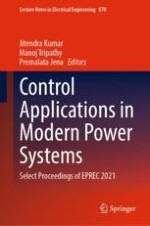The volume contains peer-reviewed proceedings of EPREC 2021 with a focus on control applications in the modern power system. The book includes original research and case studies that present recent developments in the control system, especially load frequency control, wide-area monitoring, control & instrumentation, optimization, intelligent control, energy management system, SCADA systems, etc. The book will be a valuable reference guide for beginners, researchers, and professionals interested in advancements in the control system.
